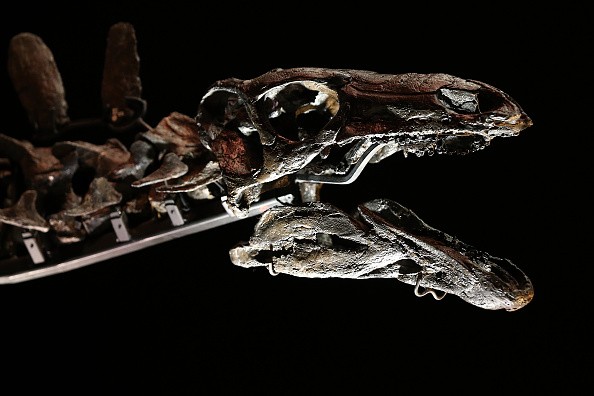Fossilized stegosaurus discovered in China is the oldest ever found in Asia, and could be the oldest in the world as well.

World's Oldest Fossilized Stegosaur
When this stegosaur roamed the Earth 170 million years ago, it measured about 2.8 meters (just over 9 feet) from its nose to its spiny tail - larger stegosaurus may reach 9 meters long.
Scientists don't know if the discovered specimen is an adult or a baby. If the specimen is an adult, it could shed light on the evolutionary history of the stegosaurus genus, according to Science Alert.
In addition to bones from the shoulder, back, thigh, feet, spine, and ribs, there were also a few pieces of armor plates.
Comparative analysis was possible thanks to the findings of a team led by Dai Hui from the Chongqing Bureau of Geological and Mineral Resources Exploration and Development.
Some of the traits of the newly discovered stego, which has been dubbed Bashanosaurus primitivus, appear to be unique. Smaller and less developed shoulders, somewhat altered thighbones, and armor plates that are narrower across, but thicker at the base, all distinguish it from the rest of its species.
The earliest armored dinosaurs lived about 20 million years ago, which is interesting because it shares some of its traits with them. A "missing link" between these older dinosaurs and the later stegosaurus may be Bashanosaurus.
Bashanosaurus is distinct from other Middle Jurassic stegosaurus and certainly a new species, Hui stated.
Also Read: In World's First Discovery, Dinosaur Found Inside Stomach of Fossilized Crocodile
Features the Newly Discovered Stegosaur
Researchers also discovered that it is one of the earliest diversifying stegosaurs along with Chongqing Lizard (Chungkingosaurus) and Huayangosaurus. Stegosaurs may have originated in Asia, based on the discovery of these fossils in China's Shaximiao Formation.
As per Science Daily, stegosaurs are one of the most popular dinosaurs from the Jurassic period. The herbivorous beast was armored from head to tail, with vicious spikes sticking out of its tail that could be used as a club.
Its other features include quadruple-propelled mobility and a rather delicate-looking head for such a tank-like creature. Bashanosaurus appears to have shared these morphological characteristics with the genus.
Gigantspinosaurus and Huayangosaurus, two early stegosaurs from China, share some features with early thyreophorans, the armored dinosaurs from which stegosaurs evolved.
Hotspot for Stegosaur Diversity
Similarities in the tail vertebra and a thinner yet flaring shoulder blade can be found, as well as a lack of deep depressions in the spine vertebrae. This suggests that Bashanosaurus is a relative to the stegosaurus family tree, making it a significant discovery for the study of the genus itself.
Stegosaurs are among the earliest known bird-hipped dinosaurs, according to a paleontologist at the London Natural History Museum. The discovery of this stegosaur from the Middle Jurassic of China adds to an increasing body of evidence that the group evolved in the early Middle Jurassic or perhaps even in the Early Jurassic.
In the Middle Jurassic until the end of the Early Cretaceous period, China appears to have been a hotspot for stegosaur with multiple species currently recognized.
Related Article: Recent Discovery Shows How There Might Actually be Three T-Rex Species
For more news, updates about stegosaurus and simialar topics don't forget to follow Nature World News!
© 2024 NatureWorldNews.com All rights reserved. Do not reproduce without permission.

![Tsunami Hazard Zones: New US Map Shows Places at Risk of Flooding and Tsunamis Amid Rising Sea Levels [NOAA]](https://1471793142.rsc.cdn77.org/data/thumbs/full/70325/280/157/50/40/tsunami-hazard-zones-new-us-map-shows-places-at-risk-of-flooding-and-tsunamis-amid-rising-sea-levels-noaa.jpg)



